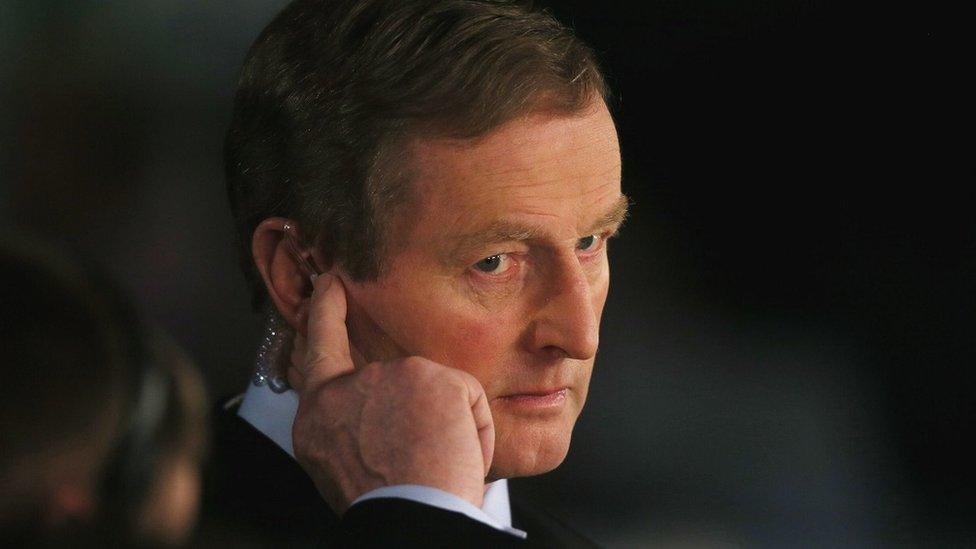Irish election: Punishing poll for government parties leaves coalition conundrum
- Published
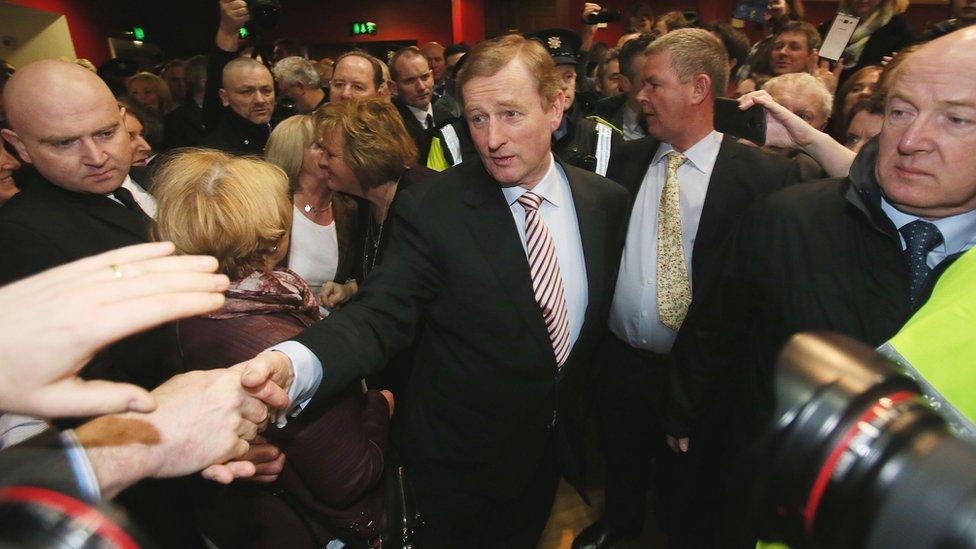
Fine Gael leader Enda Kenny has accepted his party's coalition with Labour will not be returned
Elections give voters the opportunity to choose who should run their country, but the results in the Republic of Ireland suggest the public cannot agree on who should take power.
The next Irish parliament will be a divided one, with a definite split between left and right.
On one side are the parties seen as part of the country's establishment.
Coalition partners Fine Gael and the Labour Party have been punished by the people because they have felt the pain of years of austerity.
Fine Gael find themselves in an awkward position - its vote has collapsed yet it is still the biggest party.
That leaves its leader, Taoiseach (Irish prime minister) Enda Kenny, with the responsibility of trying to form a government but without the power to do so.
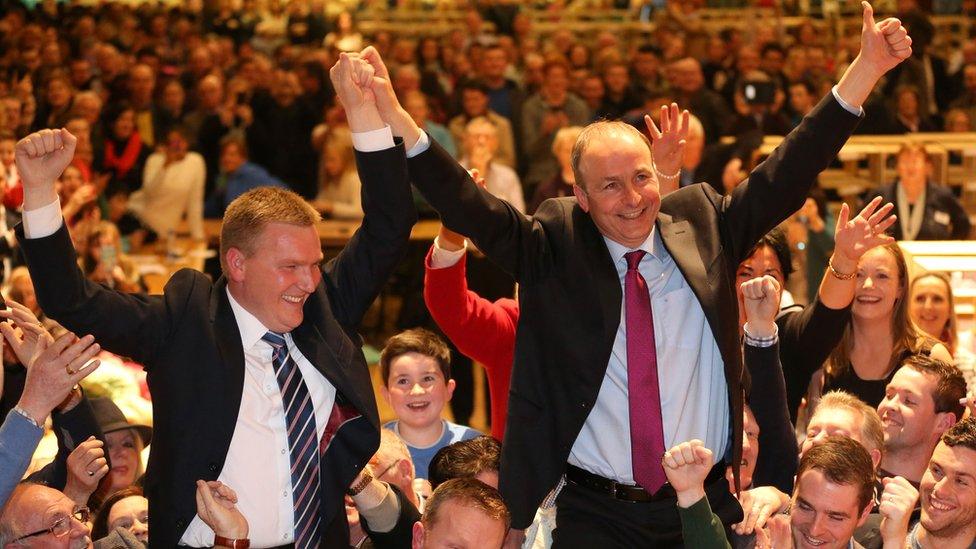
Led by Micheál Martin, Fianna Fáil, has made significant gains in the election
Fine Gael had hoped to continue with the current coalition but the Labour Party's vote collapsed.
At a count centre in Dublin, Labour campaigners looked nothing short of shell-shocked.
Bitter
When the final candidate is elected it will show the most stable government would involve Fianna Fáil and Fine Gael working together.
The idea of Ireland's two big parties in coalition is dismissed by some.
Fine Gael and Fianna Fáil share almost a century of rivalry, having emerged from this country's bitter civil war.
Commentator after commentator has discussed the potential end of "civil war politics".
And in the political world of 2016 it is fair to say the parties have much in common.
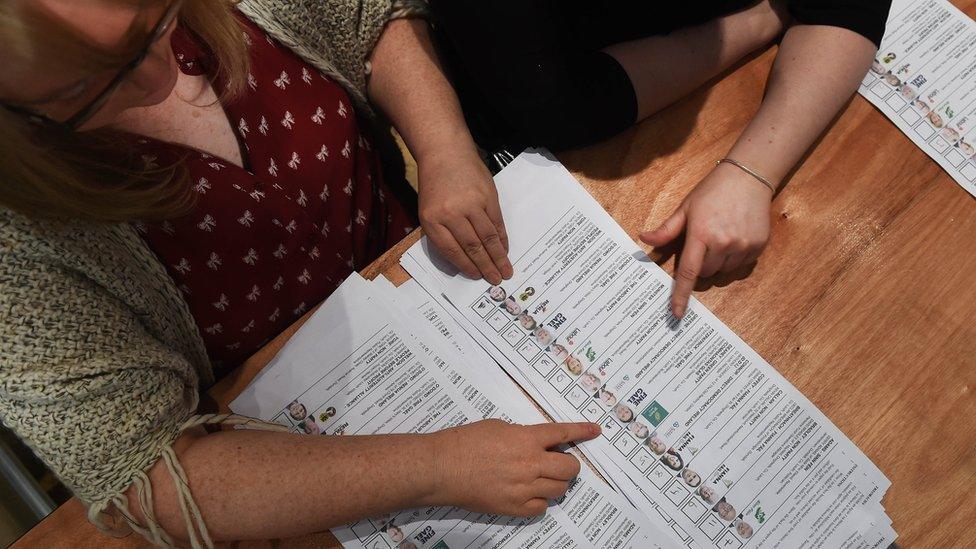
The next Irish parliament will be a divided one, with a definite split between left and right
But, many believe Fianna Fáil would sit uncomfortably as any kind of junior partner to Fine Gael, which it polled relatively shortly behind.
Fianna Fáil's vote has recovered significantly after its collapse at the 2011 election, when people blamed them for the Republic of Ireland's economic crisis.
But, it is still in second place, which is a disadvantage in any negotiation.
Distance
There is another reason why both Fine Gael and Fianna Fáil would be concerned about the prospect of a so-called "grand coalition".
An alliance between those parties would make Sinn Féin the main opposition party.
Like the anti-austerity and independent candidates whose support has risen with the public dissatisfaction with traditional politicians, Sinn Féin wants to keep its distance from the major parties.
Again and again it has said it will not be a junior partner to either of the big two.
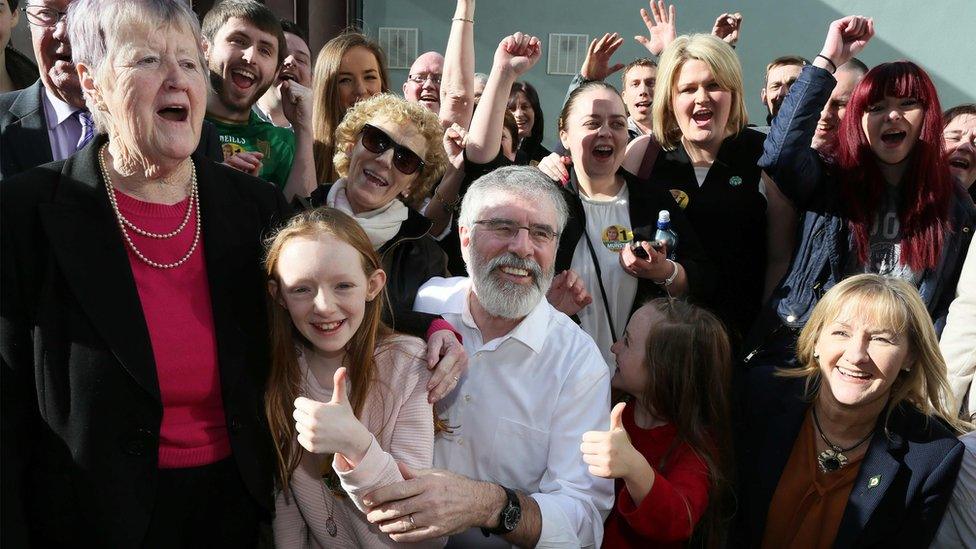
Sinn Féin president Gerry Adams suggested his party is ready for another election
For their part, Fine Gael and Fianna Fáil spent much of the campaign insisting they would have nothing to do with the party that was once viewed as the political wing of the IRA.
Sinn Féin might try to find alliances among the many left-of-centre candidates that have been elected.
And there is the opportunity for all the parties to try to woo the new independents who have won seats.
But would that make a stable government?
It all leaves one simple question - can a coalition be formed?
When I asked the Sinn Féin president Gerry Adams if he was prepared for the possibility that Ireland might have to return to the polls, he had a simple answer.
"We are always on an election-footing".
- Published28 February 2016
